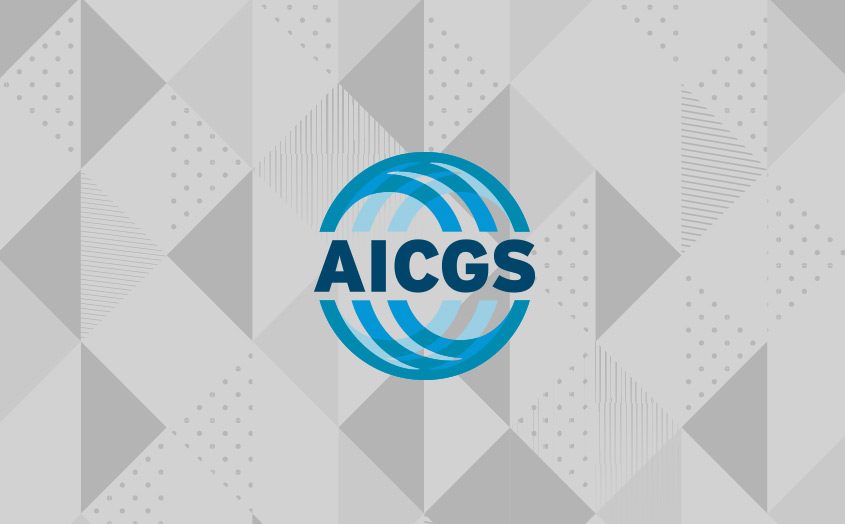
A New Kind of Reconciliation in East Asia?

Lily Gardner Feldman
Senior Fellow
Dr. Lily Gardner Feldman is a Senior Fellow at AICGS. She previously served as the Harry & Helen Gray Senior Fellow at AICGS and directed the Institute’s Society, Culture & Politics Program. She has a PhD in Political Science from MIT.
From 1978 until 1991, Dr. Gardner Feldman was a professor of political science (tenured) at Tufts University in Boston. She was also a Research Associate at Harvard University’s Center for European Studies, where she chaired the German Study Group and edited German Politics and Society; and a Research Fellow at Harvard University’s Center for International Affairs, where she chaired the Seminar on the European Community and undertook research in the University Consortium for Research on North America. From 1990 until 1995, Dr. Gardner Feldman was the first Research Director of AICGS and its Co-director in 1995. From 1995 until 1999, she was a Senior Scholar in Residence at the BMW Center for German and European Studies at Georgetown University. She returned to Johns Hopkins University in 1999.
Dr. Gardner Feldman has published widely in the U.S. and Europe on German foreign policy, German-Jewish relations, international reconciliation, non-state entities as foreign policy players, and the EU as an international actor. Her latest publications are: Germany’s Foreign Policy of Reconciliation: From Enmity to Amity, 2014; “Die Bedeutung zivilgesellschaftlicher und staatlicher Institutionen: Zur Vielfalt und Komplexität von Versöhnung,” in Corine Defrance and Ulrich Pfeil, eds., Verständigung und Versöhnung, 2016; and “The Limits and Opportunities of Reconciliation with West Germany During the Cold War: A Comparative Analysis of France, Israel, Poland and Czechoslovakia” in Hideki Kan, ed., The Transformation of the Cold War and the History Problem, 2017 (in Japanese). Her work on Germany’s foreign policy of reconciliation has led to lecture tours in Japan and South Korea.
President Obama noted in an interview with the Asahi Shimbun before his visit to Hiroshima that his presence was an example of reconciliation: “I will point out that Prime Minister Abe and I coming to Hiroshima together shows the world the possibility of reconciliation—that even former adversaries can become the strongest of allies.” Six weeks earlier, in an interview with Asahi TV, Secretary of State John Kerry also referenced reconciliation to characterize Japanese-U.S. relations: “Well, no matter what people feel about [the dropping of the atomic bomb], we are now friends and allies. We have worked through a remarkable reconciliation.” The visits of Secretary of State Kerry and President Obama to Hiroshima in April and May 2016 came at the same time as Franco-German commemorations of the 100th anniversary of the battle of Verdun, providing an opportunity to reflect on reconciliation in Europe and in East Asia.
The current international salience of reconciliation has not been missed by foreign policy experts. For example, the former Under Secretary of State for Political Affairs in the State Department, Ambassador Wendy Sherman, recently identified the global need for reconciliation—what she calls “political forgiveness”—as a political priority.
This essay looks at the nature of the reconciliation suggested by President Obama’s visit to Hiroshima, and how it compares to the iconic reconciliation pursued by Germany over more than seventy years. The path of Germany’s foreign policy of reconciliation (with France, Israel, Poland, and Czechoslovakia/Czech Republic) can be described in terms of timing, motives, actors, mechanisms, opposition, and consequences. The argument here is that, while there are many similarities in the elements that make up reconciliation across the two cases, U.S.-Japanese reconciliation as exemplified at Hiroshima is more of a pragmatic kind, lacking the deep moral basis of the German and European experience.
Timing
Germany’s official policy of active reconciliation started early, in the 1950s with France and Israel, whereas Obama’s visit to Hiroshima took place a long 70 years after the dropping of the atomic bomb. Nonetheless, not all issues were settled speedily in the German case, as evidenced by the agreement on World War II slave and forced labor, which occurred only in 2000. And in the Japanese case, the framework for a new relationship was outlined soon after war, in the San Francisco Treaty of September 1951.
Motives
Germany was driven by both pragmatic motives (the return of considerable sovereignty in exchange for facing the past) and a moral imperative (compensation and contrition were the right thing to do). The dual motives were also present for Germany’s victims.
Obama’s motives for going to Hiroshima were pragmatic: to augment the U.S. relationship with Japan; to help stabilize East Asian security at a time of perceived growing threats from China, both economic and military. Obama also framed the visit in moral terms, but not like the morality in the European experience. By emphasizing the universal immorality of using nuclear weapons, Obama removed U.S. agency. He referred to a “shared responsibility to look directly into the eye of history and ask what we must do differently to curb such suffering again.” German officials from Adenauer to Merkel have accepted German responsibility for World War II and the Holocaust. In the Obama visit, there was no Japanese acceptance of responsibility, and no explicit American accusation.
History and memory, often the expressions of moral composure, were general but key terms for Obama: “[T]he memory of the morning of August 6, 1945 must never fade. That memory allows us to fight complacency. It fuels our moral imagination. It allows us to change.” Yet, specifics were lacking.
There is a danger in this treatment of history that it will become a footnote in Japanese-U.S. relations rather than a touchstone for constant dialogue. Obama’s view of history fits with Prime Minister Abe’s. Abe insisted, in the recent “comfort women” agreement with South Korea, that there be no more discussion of the issue. For Germany, commemoration has taken place repeatedly at the same sites for 70 years. It is unclear with Hiroshima whether this visit by a head of state will be the first and only such visit, or the beginning of symbolic gestures by heads of state and government and cabinet members at sites where the war in the Pacific can be remembered with regularity. In the European context, these visits often have been additionally powerful when the German representative has been accompanied by a representative of the other country. Joint visits (as with Obama and Abe in Hiroshima) both confirm and contribute to reconciliation.
Actors
In the German and European example, civil society actors were catalysts for reconciliation, beginning soon after the war and even before the Federal Republic was founded. U.S.-Japanese postwar relations similarly have been shaped by non-governmental relations in many societal arenas from economics to culture, from town twinning to educational and academic exchange. The European societal activities typically have been coordinated with official initiatives. At first, in the planning for the Hiroshima visit, American POWs were led to believe an American POW would accompany the President, but in the end this amplification of the visit did not materialize.
Another aspect of the nature of actors in these bilateral relations is the distinction, and common experience, of being both victims and perpetrators. While carefully avoiding the idea of an apology or reexamination of the decision to drop the bomb, Obama’s presence and words at Hiroshima importantly validated Japan as victim, albeit not singularly but as part of a universe of victims: “We come to mourn the dead, including over 100,000 Japanese men, women, and children, thousands of Koreans, a dozen Americans held prisoner.” Yet, Americans were Japan’s victims at Pearl Harbor and thereafter, which went unrecognized in the Hiroshima visit.
Germany recognized early on its role as perpetrator of World War II and the Holocaust, but Germany and its victims have underscored in the last 25 years that Germans—those expelled from Poland and Czechoslovakia—were also victims, without suggesting a moral equivalence between Germans and other victims. Obama carefully avoided a victimhood vocabulary, but Abe said nothing to dispel the impression.
Mechanisms
In addition to symbolic gestures and civil society initiatives mentioned above, in a variety of policy arenas bilateral institutions have expressed policy preferences between the two sides in the European example. So, too, economics (constructing interdependence as an antidote to past conflict and as a bulwark against new conflicts) and defense (making war between the two impossible) have been prominent in the U.S.-Japanese case.
The key mechanism shaping European reconciliation has been the moral practice of acknowledgement of grievances, including but not limited to apologies, statements of regret, treaty language. The moral nature of acknowledgement is seen in its early and repeated use. Seventy years after World War II, Germans have no pragmatic need to acknowledge their conduct in the war and the Holocaust, but they continue to do so for reasons of moral compunction.
Apology, or a variant thereof, has three basic requirements:
- a recognition of the suffering of the victims;
- the assumption of full responsibility by the perpetrator for his/her acts;
- an indication of the material or spiritual compensation for the loss.
Only the first, a recognition of suffering, was present at Hiroshima, distinguishing morally the U.S.-Japan case as practiced at Hiroshima from Germany. Obama wanted to avoid the appearance of delivering an apology.
Opposition
European reconciliation teaches us that there is often opposition to the process, usually from domestic forces. Obama’s caution at Hiroshima was prompted by veterans’ rejection of the need for an apology. They felt it would call into question the decision to use the atomic bomb and would upend Truman’s reasoning that the bombing brought a speedy end to the war and avoided a massive loss of life. According to a 2015 Pew Research Center poll, 56 percent of Americans believed the use of the bombing was appropriate. Among those over 65, the figure for acceptance was 70 percent.
Despite Obama’s conviction that his visit to Hiroshima might advance his most profound commitment to a world without nuclear weapons, making victims but not contrition important, he inevitably has received the political criticism he anticipated. Supporters of the presumptive Republican presidential nominee called Obama “weak” and the visit unnecessary because Japan was the undisputed aggressor. For Obama’s nuclear agenda, and for his policy of making Japan the Asian leader against a rising China, this first act of reconciliation was essential. The test now is whether it will hold and be reciprocated.
Consequences
Bilateral reconciliation in Europe contributed in the postwar world to the stability of Western Europe as a whole. A new round of reconciliation after 1989 contributed to stability and solidarity in Eastern Europe, although Putin’s hyper-nationalism and nostalgia for the Soviet era have put both in question. Greater stability in East Asia could be a consequence of Obama’s trip if the President were to move vigorously on three fronts:
- insist on a visit by Abe to Pearl Harbor (both sides need to acknowledge history). The Japanese defense minister visited in November 2015, but an equivalent to the President’s Hiroshima gesture is necessary;
- increase the number and intensity of civil society connections between Japan and the U.S. and include China and South Korea. There are many disparate non-governmental initiatives, but increasing, consolidating, and profiling them would provide a critical mass for a new push to reconciliation;
- be willing to mediate between Japan and China and between Japan and South Korea over history issues. Before the Hiroshima visit, the U.S. did not have the moral authority to push Japan toward regional reconciliation because of the use of the atomic bomb. Japan perceived and presented itself as victim. Now that its victimhood has been validated, both sides are liberated to look at reconciliation with fresh eyes. Such a willingness would assume that the Hiroshima visit was a demonstration of strength and courage, not the weakness the President’s critics are intent to claim.








